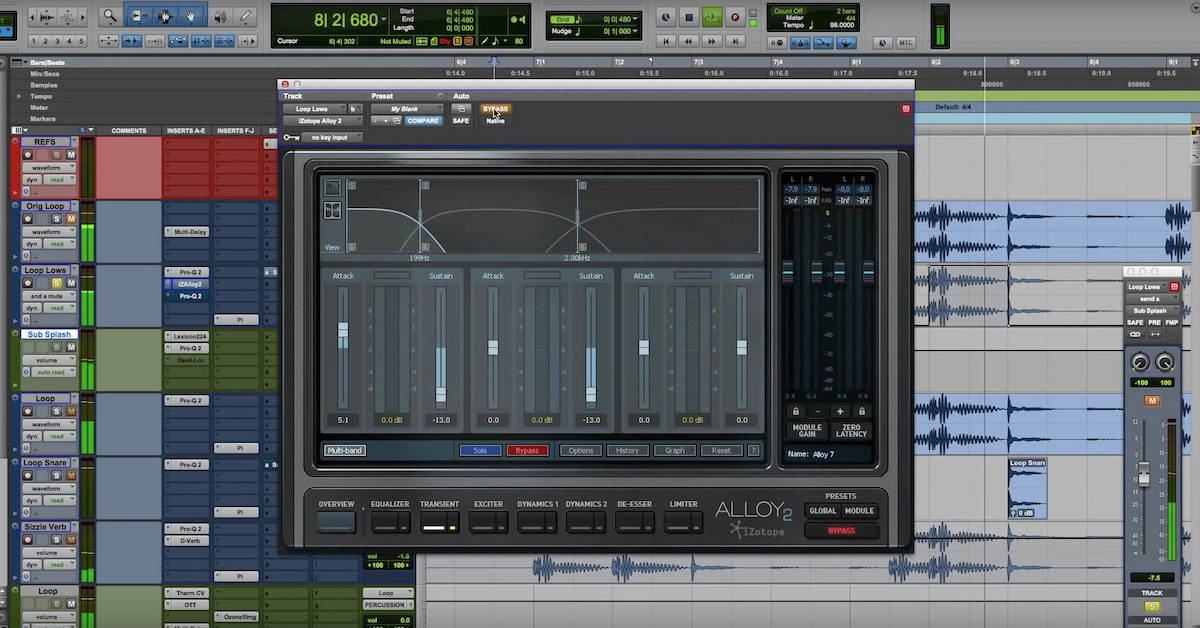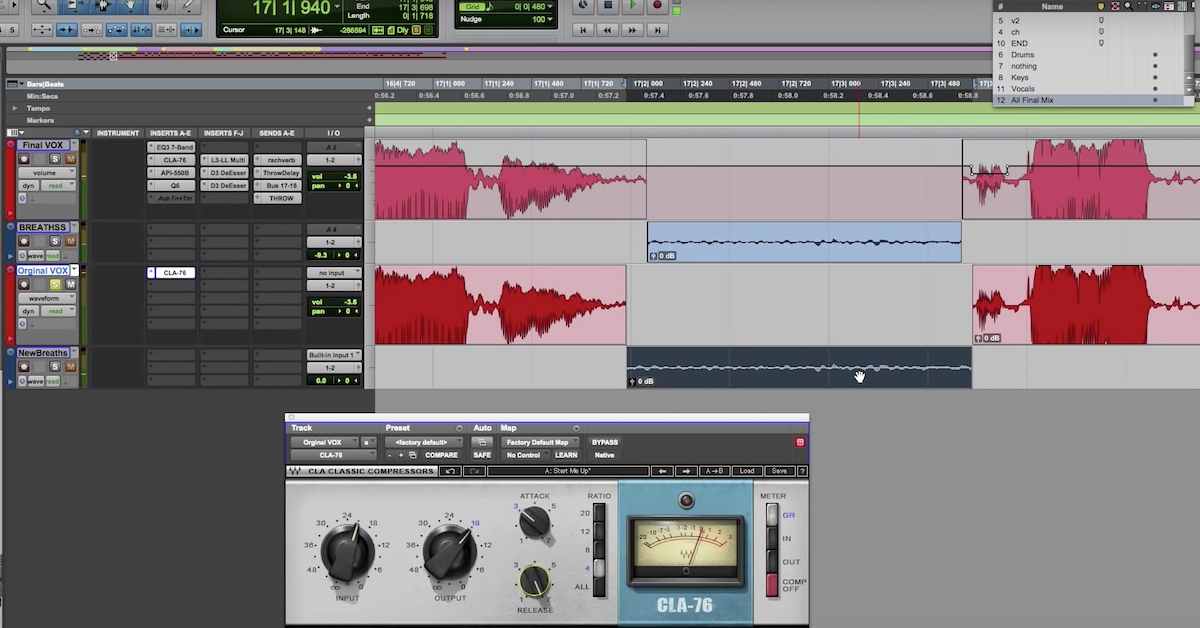What is Mixing?
Article Content
Originally titled “A Philosopher’s Guide To Understanding Mixing,” but that’s not really what this is. This is about understanding the core idea of the mixing process so that everything else we learn about it makes sense.
I don’t want to simply put techniques on display when I write. I want to outline a thought process that informs the reader on how to make decisions and conceptualize what we are doing when incorporating techniques. Every song and recording is unique, so there’s no way to copy any technique.
The process always requires adapting to what’s in front of us. It’s the thought processes that can stay consistent. I feel that in order to make this take on mixing make sense it’s really important to dissect what mixing even is, and why we are making the choices we make to begin with.
The Artifice Of Mixing
If we go back in time we discover that mixing wasn’t even a thing until about 30 years into the world of making records. It wasn’t even a separate job from “engineering” until around the 80s. For the majority of the recording business, the idea of hiring an engineer who only mixed the record down would have been considered ridiculous.
Pre-production was considered the most influential aspect of the record making process. This meant the selection and arrangement of songs and the rehearsal of the performance. Following that came the production itself — the takes, retakes and overdubs, and how those takes were recorded. The post-production was quite literally an afterthought. And even most of the post-production was spent on editing.
In the 70s, as bands started getting experimental, the idea of musical sound started formulating. Delays and reverbs all have musical qualities that are inseparable from their intended function. You cannot have these effects without rhythm, and because they have duration, they also change or reinforce the harmonic structure of what is happening around them.
Psych-rock bands really took advantage of these effects by incorporating them as part of the musical arrangement. This sets up the precursor to my big thesis on what mixing really is. But before I get into that, I want to talk about Dub music.
Parallel to Psychedelic Rock, a style of Reggae was brewing called Dub. This genre earned its name through the process of taking already recorded tapes, stemming out over a console, and re-dubbing them back onto new tape as the production process.
During this re-dub, processors like delays, reverbs, phasers, flangers, EQs, compressors, volume rides and mutes were used to change the musical arrangement. Sound manipulation became the core musical idea of this production process.
This ideology of sound manipulation being a central part of the music really came to fruition in Electronica. Could you imagine Cher’s “Believe” without Autotune? Or Daft Punk’s “Harder, Better, Faster, Stronger” without Vocoding?
In fact, many genres wouldn’t be what they are without a defining sound — and not simply the notes and rhythms associated with the music. This is true even in genres which aren’t effect-driven. Hard Rock without full and powerful guitars would not be Hard Rock.
The Big Thesis
The process of mixing is understanding how the shaping of sounds will cause them to relate to one another, and what the effect of that shaping will be. Let me break that down.
When we mix, we are assessing the tone, dynamics, envelope, spatial presence and harmonic qualities of musical elements. We are determining how those qualities interact and how that hits the listener.
From there, we’re choosing to manipulate those qualities in specific ways to create a new relationship between musical elements, in order to create a better experience for the listener; an experience that follows the artistic intention of the song in a more fulfilling way.
We use sound as a device to make the happy happier, the sad sadder, the angry angrier, and the dance “dancier.” Just like composers choose notes and musicians choose their playing techniques. From the words written, to the instruments chosen, to the rhythm, tempo and performance — we’re all working toward the artistic intention of the song.
Mixing is the arrangement and customization of sound.
If we look at the process as part of the musical arrangement, we suddenly have a somewhat new mindset in terms of what we’re trying to accomplish. Viewing mixing as a function of sound yields ideas that tend to conform: we want clarity, we want depth, we want dynamics, and we want balance.
That’s all well and good — most music generally benefits from these concepts because it exposes what everyone else has done in the production process up to this point. These ideas are ultimately what most clients are looking for and will rarely ever work against you.
But if we view mixing as a musical device, we start listening for something different: time, rhythm, pacing, voice leading, melody, arc, aesthetic and feel. For the end listener, these are the ideas that make the song engaging. As mixers I believe our job is to finesse these musical ideas through the sonic qualities of a recording.
I was in the studio with my friend Samik, a talented and accomplished producer, finishing up a mix. As I played the mix, he immediately pointed out something that had nothing to do with the mix itself, but everything to do with the end listener experience.
There was a busy organ part throughout the song. It wasn’t distracting in the choruses because the chorus vocals were very simple — but it was very distracting in the verse. So I dulled it by rolling off the top end and used a transient designer to take away the punch. He said, “I would just take it out.” So I ran a mute automation pass and turned the continuous organ part into fills. The improvement was pretty profound.
This little anecdote raises up two important points. The first is that mixing can be seen as the last hand in the production process, and really nothing is off limits — including removing a part. As a musical choice, muting was the best option.
The second point is that there’s an overlap in the job descriptions and clearly I was stepping on the producer’s toes. The problem with viewing mixing as an extension of the production and as the job of a “sonic musician” is that the actual musicians are already in the band. Muting a part is a pretty risky proposition and requires a lot of trust.
This time around it had a positive turn out. I was able to play the before and after for the client at the studio and he understood pretty quickly how the record improved. However, I’ve had the opposite happen as well.
Very commonly, clients will want a production to have a certain style or feel that isn’t innate to what they created, and that can be very difficult. I was fired for dubbing an impact noise into a production once. I had a client give me a lot of grief for not having a powerful sub range, despite the fact that the lowest tone of any element in the record was around 80Hz. I’m currently struggling with background vocals because the client wants them very loud and present but unfortunately, they sound like they were recorded with a mic face down in a trash can.
Point being, sometimes there’s a disconnect between what the client imagines the sonics of a mix should be versus what the sonics would actually do to the music. Pushing up really edgy background vocals immediately makes the whole mix sound harsh and masks all the other elements. Musically the song is much better served with the background vocals heavily EQ’d and tucked.
Unfortunately, after a while, one has to give up on being a secret musician in the band. That happens. In which case we make a reasonably good mix of a song that we know ultimately won’t turn too many heads. But at least we know what could’ve been and what would have worked best.
The positive side is that when we’re able to make strong musical decisions by seeing the producers vision, and with awareness of the production’s potential, we can make incredible mixes that translate into the best experience of the song that the listener can get.
The core function of mixing isn’t really about clarity and depth. It’s about groove, melody and intention.





